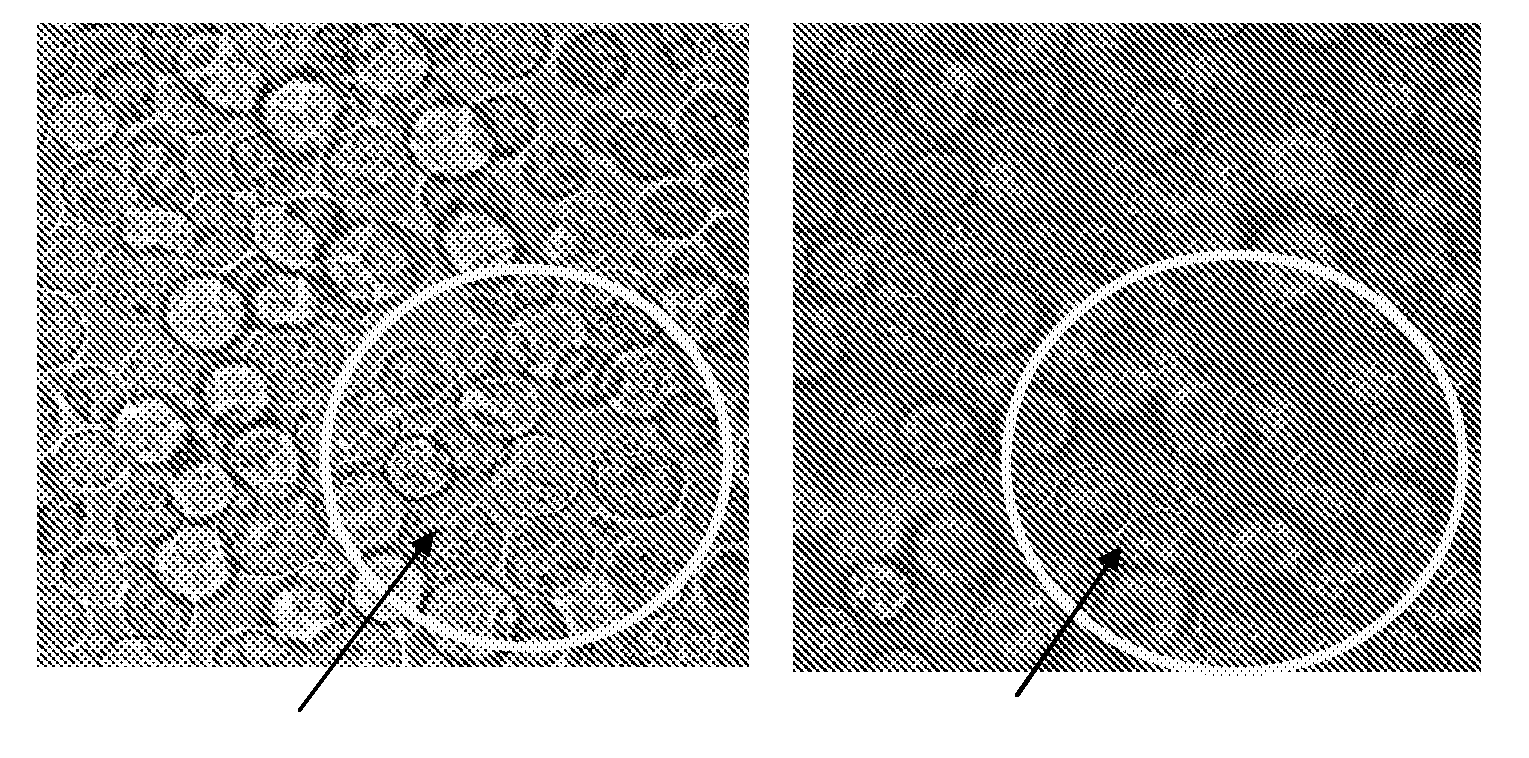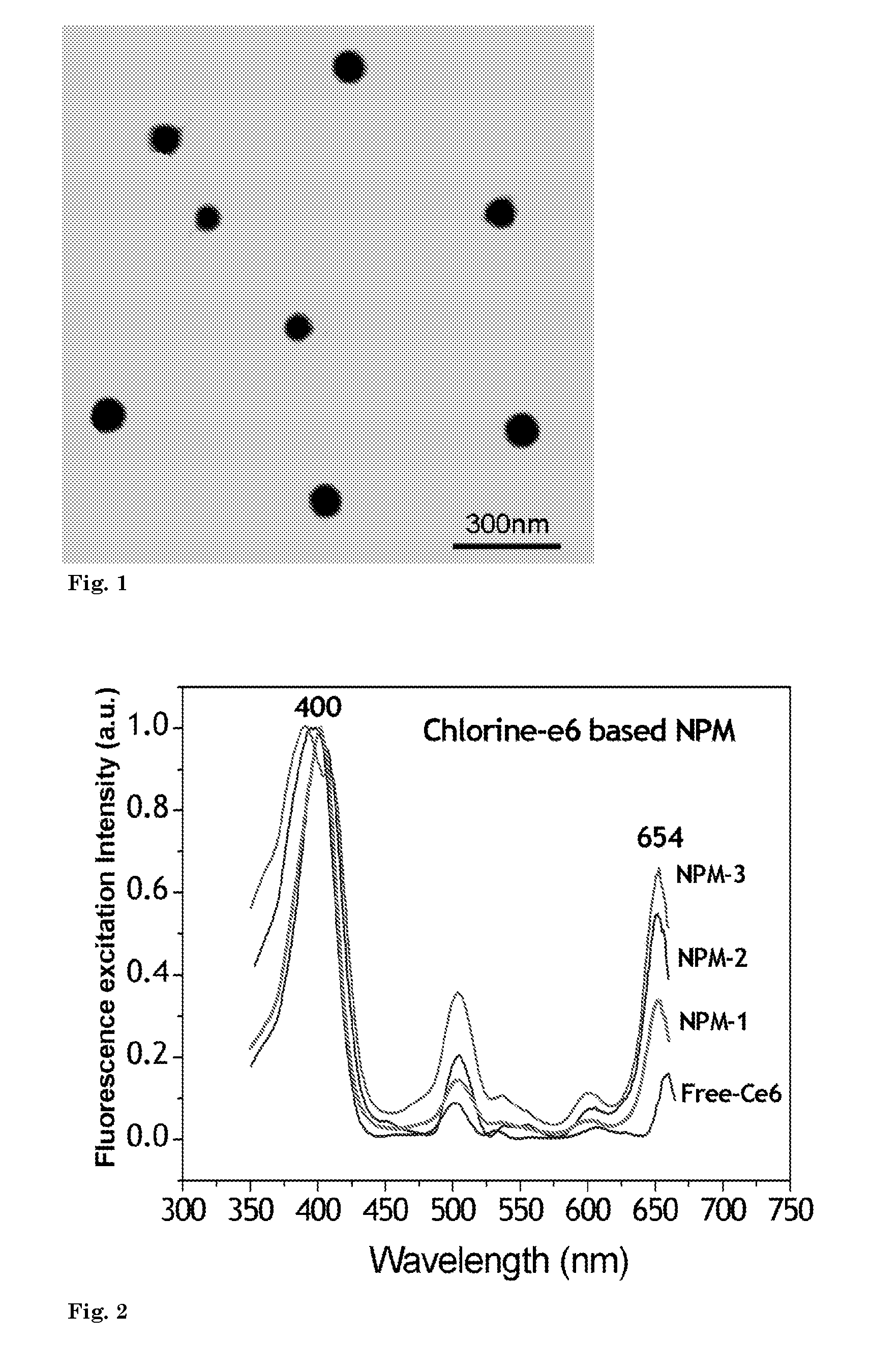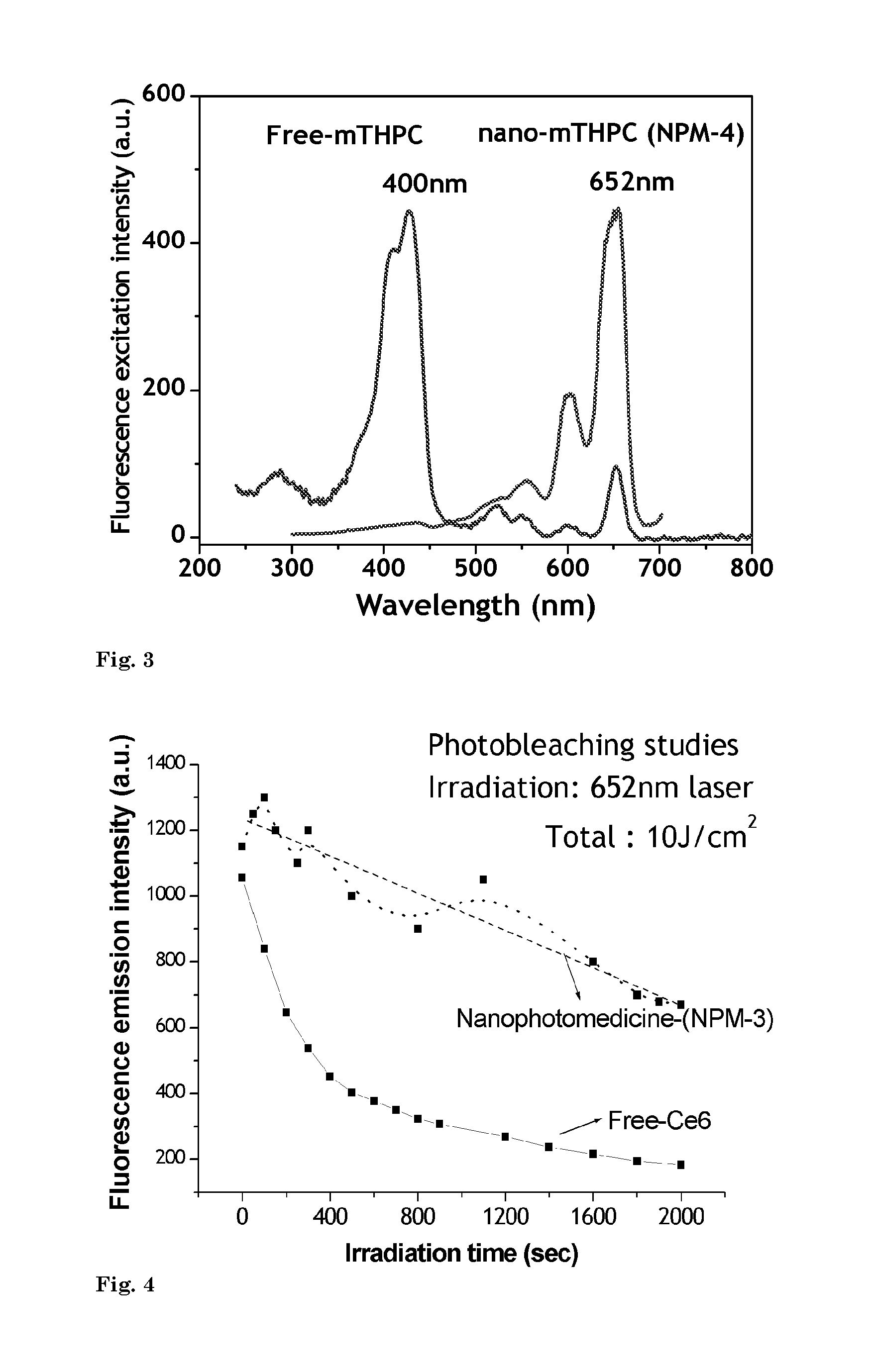Targeted nano-photomedicines for photodynamic therapy of cancer
- Summary
- Abstract
- Description
- Claims
- Application Information
AI Technical Summary
Benefits of technology
Problems solved by technology
Method used
Image
Examples
example 1
Production of Nanophotomedicine NPM-1 Using Ce6 as Photosensitizer
[0093]In this example preparation of photosensitizer chlorin e6 (Ce6) based nanophotomedicine (viz. NPM-1) having ˜2 fold higher absorption of light by the final construct in the Q-band (654 nm) region compared to that of free Ce6 is presented.
[0094]A 1 μM concentration of Ce6 (commercially available from for instance Porphyrin Products, Logan, Utah) was reacted with 10-15 fold molar excess of EDAC and 10-15 molar excess of Sun-NHS in 5 ml of 99% DMSO. After 4 hrs of reaction, the conjugated product is purified by gel-filtration providing amine reactive photosensitizer, which is further reacted with the silane coupling agent using 200 μL of APTS. The coupling reaction is continued for 3-4 hrs in dark, at room temperature, providing the compound Ce6-APTS. In the next step, the Ce6-APTS is reacted with 600 μl, (about 600 mg) of TEOS or TMOS for 2-3 hrs in 10 ml of 99% ethanolic medium, forming the precursor for silane-c...
example 2
Characteristics of Nanophotomedicine NPM-2 with Ce6 as Photosensitizer
[0096]In this example, processing of nanophotomedicine (NPM-2) with ˜4 fold higher absorption of light in the Q-band compared to that of free Ce6 is illustrated.
[0097]A 1 μM concentration of Ce6 was reacted with 10-15 fold molar excess of EDAC and 10-15 molar excess of Sulfo-NHS in 5 ml of 99% ethanol. After ˜4 hrs of reaction, the conjugate is purified by gel filtration providing amine reactive photosensitizer which is reacted with the silane coupling agent using 300 μL of APTS. The coupling reaction is continued for 3-4 hrs in dark, at room temperature, providing the compound Ce6-APTS. In the next step, Ce6-APTS is reacted with 800 μL of TEOS or TMOS for 3 hrs in 10 ml of 99% ethanolic medium, forming the precursor for NPM-2. Hydrolysis of this precursor by the addition of 3 ml of water and 600 μL NH4O4 under sonication for 15 minutes with an interval of 2 min leads to the precipitation of NPM-2 nanophotomedicin...
example 3
Production of Nanophotomedicine NPM-3 Using Ce6 as Photosensitizer
[0098]In yet another example, the production of nanophotomedicine (NPM-3) with 7 fold higher absorption in the Q-band region compared to that of free Ce6 is illustrated.
[0099]A 1 μM concentration of Ce6 was reacted with a 10-15 fold molar excess of EDAC and a 10-15 molar excess of Sulfo-NHS in 5 ml of 99% ethanol. After 4 hrs of reaction, the conjugated product was purified by gel filtration providing amine reactive Ce6 which is reacted with the silane coupling agent using 600 μL of APTS. The coupling reaction was continued for 3-4 hrs in dark, at room temperature, providing the compound Ce6-APTS. In the next step, the Ce6-APTS was reacted with 1000 μL of TEOS or TMOS for 2-3 hrs in 10 ml of 99% ethanolic medium, forming the precursor for silane coupled quasi-aggregated photomedicine. Hydrolysis of this precursor by the addition of 3 ml of water and 800 μL NH4O4 under sonication for 20 minutes with an interval of 2 mi...
PUM
| Property | Measurement | Unit |
|---|---|---|
| Size | aaaaa | aaaaa |
| Magnetism | aaaaa | aaaaa |
| Optical properties | aaaaa | aaaaa |
Abstract
Description
Claims
Application Information
 Login to View More
Login to View More - R&D
- Intellectual Property
- Life Sciences
- Materials
- Tech Scout
- Unparalleled Data Quality
- Higher Quality Content
- 60% Fewer Hallucinations
Browse by: Latest US Patents, China's latest patents, Technical Efficacy Thesaurus, Application Domain, Technology Topic, Popular Technical Reports.
© 2025 PatSnap. All rights reserved.Legal|Privacy policy|Modern Slavery Act Transparency Statement|Sitemap|About US| Contact US: help@patsnap.com



